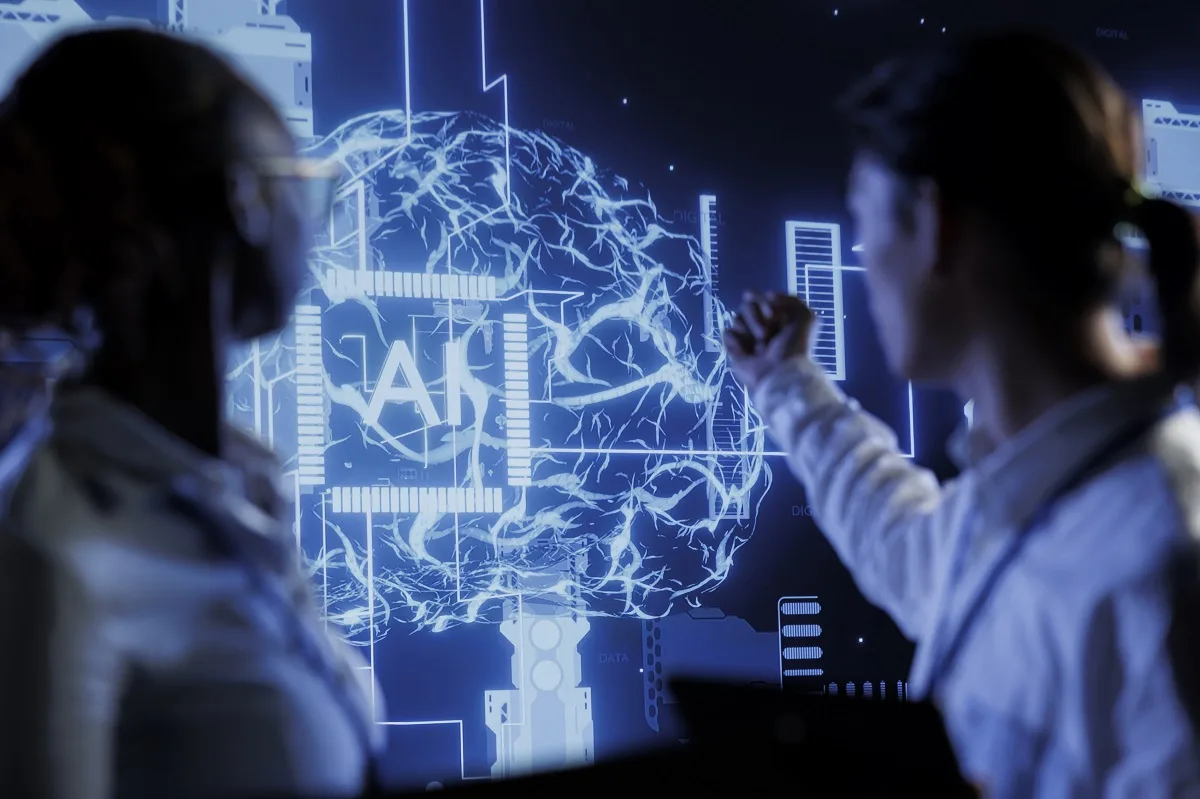
Have you ever wondered how AI can suggest a perfect movie, songs, or other recommendations? Isn’t it simply wonderful how AI is developing? This is all incredible, however, the backstage action is that much interesting.
Today, in this article, we will consider what components, or rather, what is the “core stack”, is needed to create a modern AI application.
What is AI Tech Stack?
In reality, an AI tech stack is a group of AI development tools, frameworks, and technologies that work together to produce intelligent applications. You can say that this is a blueprint to build a smart system. By integrating everything for the development and distribution of data collection and storage to complex AI models, AI Tech Stack is a dynamic ecosystem that continuously develops with new techniques.
In 2025, the generic AI industries appeared as the most talked-about technology for operating innovation. According to a report from Goldman Sachs, an actual investment in artificial intelligence is expected to touch the sky with $ 200 billion by the end of 2025. This is an outrageous sum and the evidence of how significant and revolutionary AI has turned out to be. Such interest piquing points to the significance of a technically sound, finely-constructed stack, since it is a major factor in the creation and release of cutting-edge AI systems.
Essential Layers of an AI Tech Stack
Building up an AI system requires a complex and layered tech stack. In it each component plays a crucial role to enhance functionality and efficiency of the system.
Let us now explore these layers:
Hardware
Although CPUs, in computers, are extremely efficient, they lack when it comes to AI. For this you need more power and this is where the role of GPUs (Graphics Processing Units) come in. GPUs are efficient at handling data heavy tasks that are required for AI training.Following this are Tensor Processing Units (TPUs), which Google specifically created to speed up machine learning activities. They can be thought of as the racing cars of the computing industry, designed with the express purpose of boosting AI efficiency.
Data
Second is the data layer where all the accumulation, storage, and processing of data for AI models training take place. Here the data comes from all the places such as, sensors from IoT (Internet of Things) devices, data from internet, websites, reports, social media etc.
Once the data is collected, one requires a system to store it.In this case, databases like NoSQL for unstructured data and MySQL for structured data are essential. Other than this, to accommodate massive datasets one can also use tools like data lakes, that are best suited for storing massive data easily.
Infrastructure
This is the main layer responsible for accommodating AI models to develop, train, and deploy. There are many platforms like AWS, Google Cloud, and Microsoft Azure that offer scalable resources, AI services and data storage solutions.
Other than this, if you have specific security needs, you can also opt for on-premise infrastructures that give you complete control over your data and save you from threats of theft.
Modeling
In the process of modeling training of AI is done through various machine learning frameworks like PyTorch and TensorFlow. These frameworks help in streamlining the development process by providing intelligent tools and frameworks like TensorFlow and PyTorch.
A huge amount of computing resources are necessary to teach AI. This creates a need to utilize such cloud platforms as Google AI Platform or AWS SageMaker. These platforms are capable enough for providing scalable resources and managed services to handle intensive computational needs.
Application
In the application layer, one puts AI to work. This is also the process where AI models are integrated into real-world applications.
It is in this model that AI models come to life and are able to make a real impact. Once your AI model is ready after training, you can plug it into your system and applications. Often, it is called as integrating it into software, setting up APIs, and finally deploying the services. For example, it looks like adding a recommendation engine into an online store to enable efficient browsing.
6. Deployment
For an AI development company, deployment means making the AI models come into the real-world. The systems you require in this step are those that are able to assist your models to predict accurately in real time.
In a bid to simplify the deployment process, there is an idea to utilize such tools as Docker. This framework packages the models and the dependency so that they can be used easily.
7. Monitoring and Maintenance
Finally, AI models should be monitored in order to provide their proper operation. With monitoring, you can track how well your models are performing and initiate maintenance, when needed. It helps you keep an eye on even minor drifts to take actions real-time. Along with this, you can connect logs to understand the bottlenecks and work towards improving them for more efficiency.
Conclusion
There is no doubt that modern AI applications are complex and are layered with multiple tech stacks for their efficient functioning. In order to do it efficiently and work with a modern day application successfully, it is suggested to hire AI developers that can fully understand your business needs and suggest best solutions.

